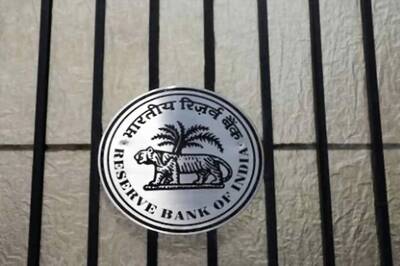
views
CHENNAI: The bus rapid transit system, which has revolutionised the transportation sector in cities like Ahmedabad may soon become a reality in Chennai.The Institute for Transportation and Development Policy (ITDP), which was commissioned a feasibility study of BRTS by the State government, is expected to table its report shortly favouring the implementation of BRTS as a practical solution to the city’s traffic woes.“The connectivity between the Eastern and Western suburbs of the city are weak and BRTS can string together the missing links in the networks of Metro Rail and MRTS,” said Shreya Gadepalli, programme director at ITDP. “Connections between OMR, Siruseri, Porur, Poonamallee and Red Hills are weak, this can be exploited by the BRTS,” she said.BRTS will consist of dedicated lanes, preferably in the centre of the road for buses, with dedicated stations and high power buses being pressed into service.If planned and executed well, the buses will have no steps but will be on same level with the station floor, enhancing the convenience for the elderly and physically challenged and also improving the efficiency.“About 20 people can get in and out of the bus in just 10 seconds provided there are no steps,” Shreya said. “Existing examples have shown that BRTS can transport around 45,000 commuters travelling in the same direction in an hour at an average speed of 25km per hour.This is one major advantage for a city like Chennai where average speeds during peak hours are known to drop to 12-13km per hour,” Shreya said.In Chennai, while around five lakh commuters use local trains every day, more than 10 times that amount, nearly 50 lakh commuters depend on buses, show statistics. “Hence by implementing BRTS, we will address more commuter problems.If planned well, BRTS can be completed within two-and-a-half years,” confirmed Shreya.Experts also say that it is a myth that BRTS requires large and wide roads to operate.Examples in countries like Mexico, Columbia and Ecuador have shown BRTS to be successful even on a 50-metre road.But for BRTS to be successful, it is not enough if the physical infrastructure is in place, there must also be an institutional mechanism to regulate the system.“While the primary attention of MTC is on day-to-day bus operations and maintenance of staff, there is not sufficient attention paid to operations planning and monitoring efficiency,” says a report by Chennai City Connect. The report further suggests that MTC be transformed into a public transit management body rather than being a bus operator, and outsource the operations to private agencies in order to improve efficiency.The BRTS system has proven to be a phenomenal success in Ahmedabad by not just providing an efficient transport system, but by also reaping in more revenue.A fleet of 65 buses on a 40-kilometre route takes 1,20,000 trips a day transporting 1,800 commuters every hour in Ahmedabad.The system, according to the statistics, was earning 125 per cent more revenue than the Ahmedabad Municipal Transport Service (AMTS).Thus, an integrated transportation network can be created stringing together the BRTS, Metro Rail and MRTS by providing internal transit, say experts. “For instance, a person must be able to walk internally or use an escalator from a BRTS station to the Metro Rail station to continue his journey forward,” said Balchand Parayath, CEO, Chennai City Connect Foundation, while giving a talk earlier on ‘Transformation of Chennai — the civil society point of view’. “When completed, the integrated transport system must be such that a commuter is able to pay at one source, to buy a common ticket with which he can travel by an auto to the BRTS station, take a bus to another MRTS or Metro Station and continue his on his way, all using the common ticket,” Parayath said.

















Comments
0 comment